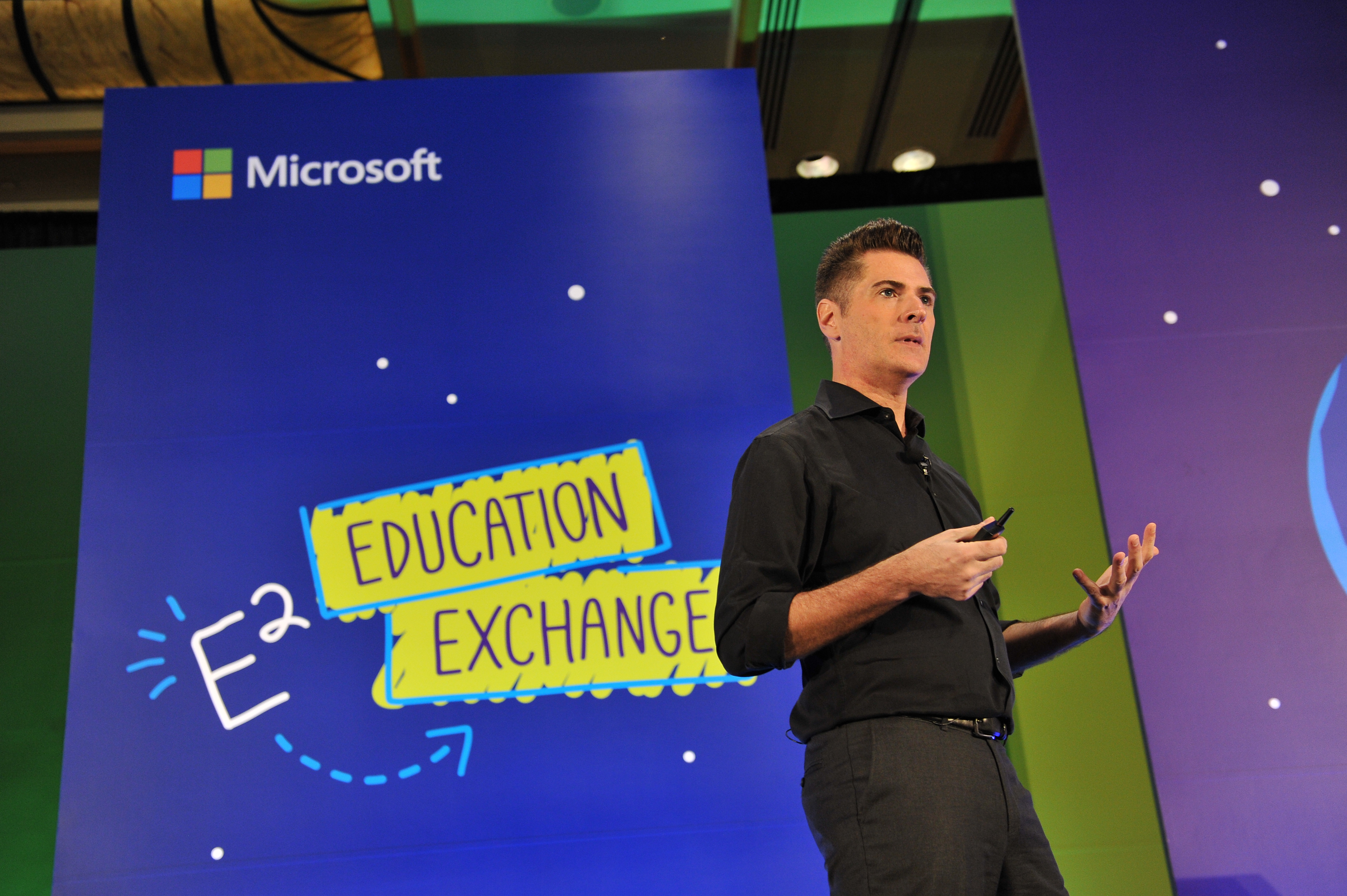To ensure that students stay engaged and empower them to be future-ready, education institutions are embarking on their digital journeys to introduce technology tools and digitalize their environments. However, one question that many education institutions still have when pursuing their transformation initiatives is: Is technology effective in improving learning outcomes?
Speaking at the Microsoft Education Exchange (E2) in March, Anthony Salcito, Vice President of Worldwide Education, Microsoft, encouraged school leaders to think about adding a “when” to the question. And ask instead: When is technology effective in improving outcomes?

Identifying the conditions for success
The potential of technology is boundless. Myriad organizations and education institutions around the world have leveraged technology to successfully transform for the better. Yet, there have been cases where technology has been less effective in driving change.
Instead of doubting technology’s effectiveness, it is important for school leaders to go one step beyond to examine their own digital journeys, and identify the key factors that lead to success. This knowledge will enable education institutions to be better able to implement technology initiatives that improve the learning experience more effectively—and at scale.
Understanding the patterns and trends behind success and failure
Recent or current technology implementations are a good place for education institutions to start finding out more about the success factors for their initiatives.
Education institutions should gather as much data about the implementations, such as the number of hours spent on teacher training, number of students involved in the implementation, student grades throughout the implementation, classroom techniques being used and more.
With the help of analytics software such as PowerBI, education institutions can leverage these data to generate insights such as common trends or patterns that led to better student outcomes. In addition to quantitative data, it is also good practice to gather qualitative feedback to supplement the analysis.
By discussing with educators, key student representatives and parents, school leaders can find out whether the insights garnered are truly reflective of reality, and obtain valuable feedback not reflected in the data.
Looking at how other education institutions succeed in their own digital implementation can also be a good way to discover new ways of using technology. However, what works for one institution may work differently for another—so school leaders will have to adapt and refine to ensure their own implementation is relevant for their students.
Refining and optimizing effectiveness continually
With a better understanding of what is likely to work for their own students, school leaders can look at adjusting their current or future technology plans to optimize for student success. And to maximize student benefits, education institutions should record and analyze data in a consistent manner, before and after the changes—so they can continually learn from their implementations to refine and optimize learning outcomes.
As in the case of Fordham University in the United States, this data, combined with predictive analytics and machine learning, will allow education institutions to foresee how effective their new programs will be—and finetune them to expect optimal results. This will enable institutions to introduce new digital tools and services at scale, and with more confidence that their technology initiatives are effectively empowering their students.
Working with a technology partner to ensure success
In addition to applying technology within the classroom, having to set up tools to collect data, generate analytics, and refine these initiatives can be a challenge for education institutions and their IT teams to juggle.
This is where working with a technology partner with a wide-ranging portfolio of tools and solutions can prove valuable. In addition to facilitating the initiative itself, they will be able to support the monitoring and refinement of the project. This has the added benefit of compatibility across the different solutions—from classroom tools to IoT solutions and analytics software—so education institutions can focus their efforts on refining their initiatives for better student outcomes.
Microsoft not only has a comprehensive ecosystem of on-premise and cloud apps, tools and services, it also has proven its expertise and commitment towards helping education institutions achieve effective educational transformation with technology. Find out how Microsoft is supporting schools and educators in empowering their students to achieve more.
For more information, please visit Microsoft Education or the Microsoft Educator Community Portal.





